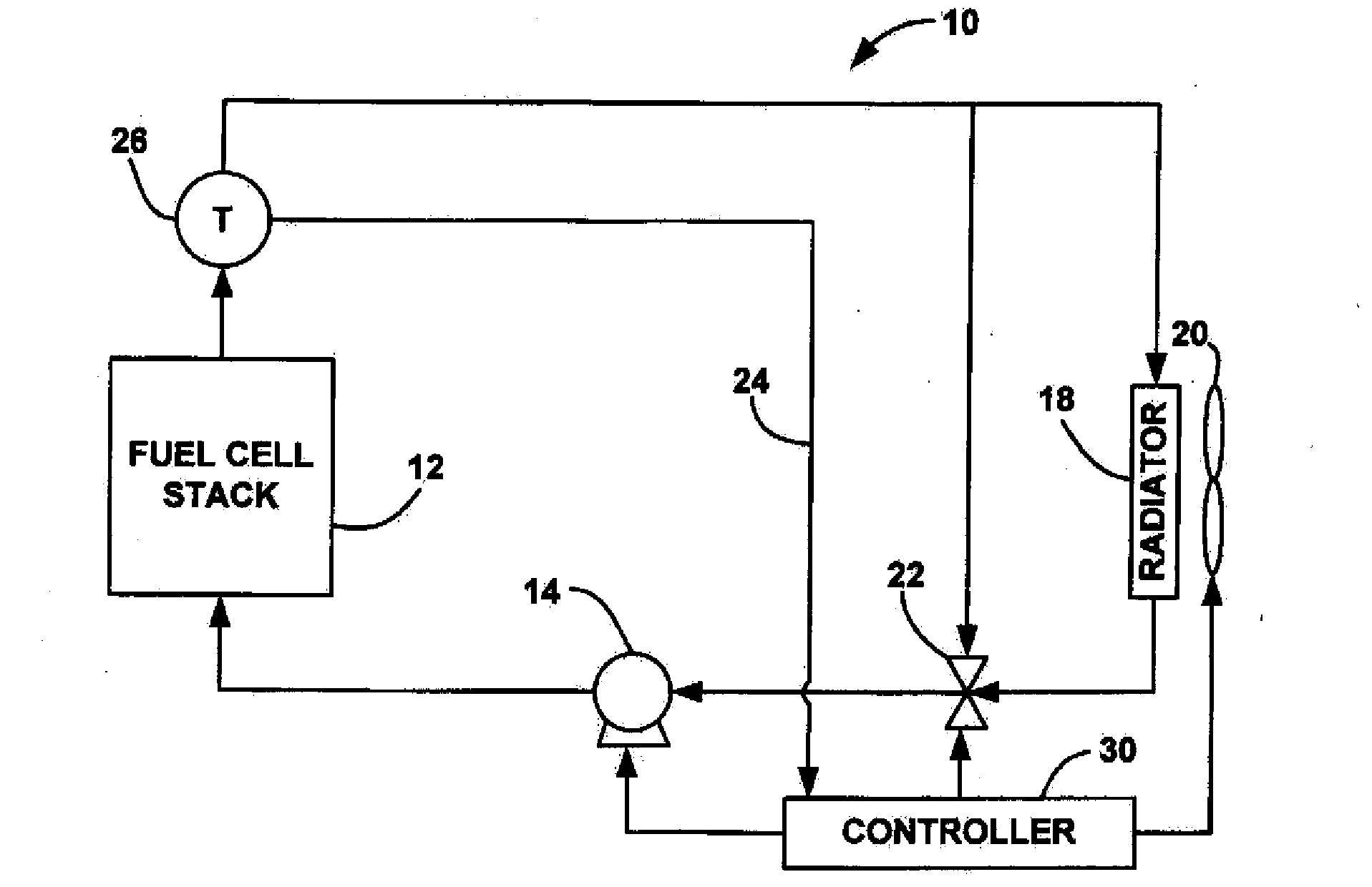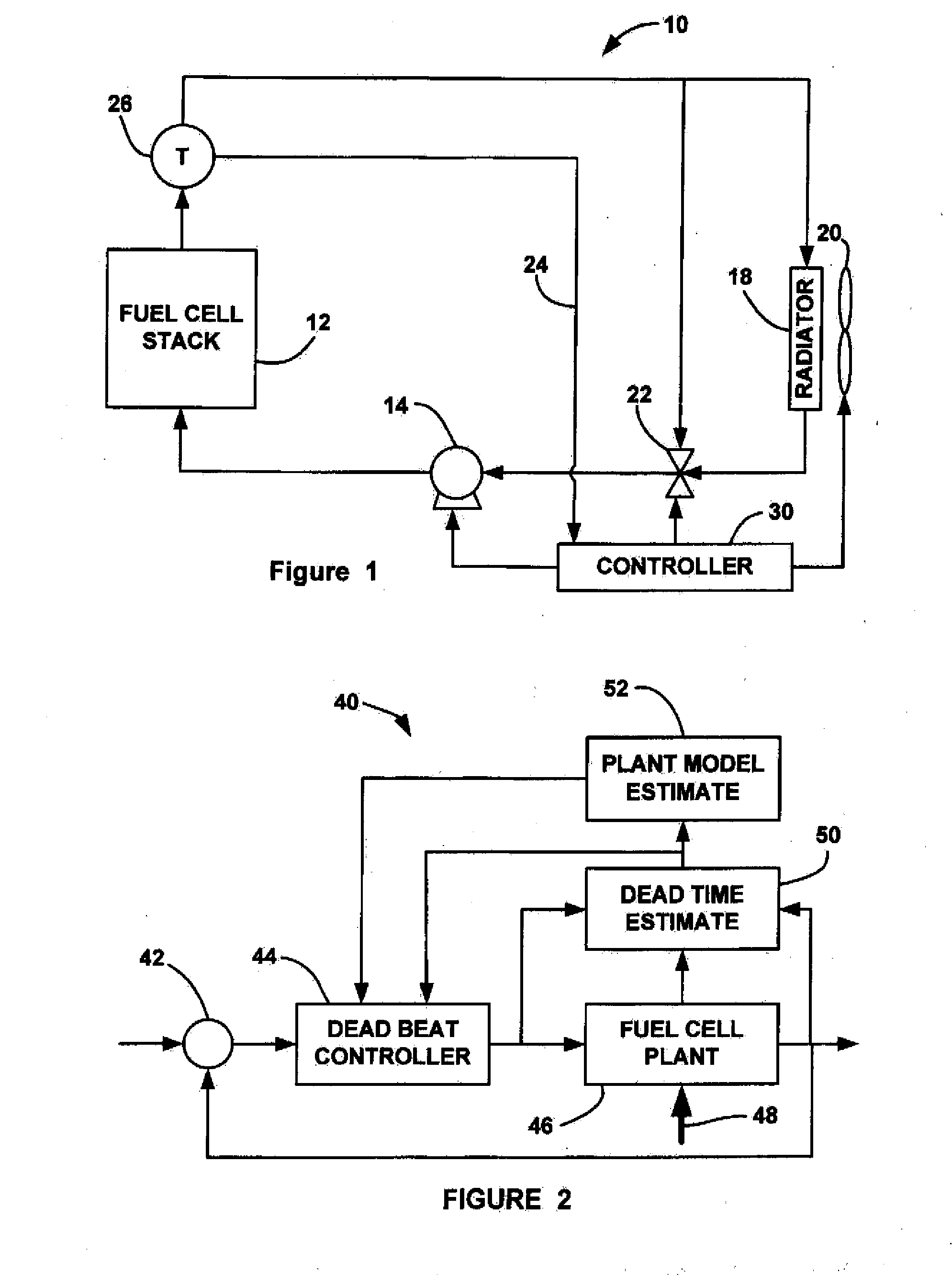Self-tuning thermal control of an automotive fuel cell propulsion system
a fuel cell propulsion system and self-tuning technology, applied in the field of fuel cell systems, can solve the problems of tuning for one operating condition, affecting the operation of the fuel cell stack, and relatively high manufacturing costs of the measle,
- Summary
- Abstract
- Description
- Claims
- Application Information
AI Technical Summary
Benefits of technology
Problems solved by technology
Method used
Image
Examples
Embodiment Construction
[0014]The following discussion of the embodiments of the invention directed to a system and method for on-line tuning of temperature control for a fuel cell stack is merely exemplary in nature, and is in no way intended to limit the invention or its applications or uses.
[0015]FIG. 1 is a block diagram of a fuel cell system 10 including a fuel cell stack 12. The fuel cell system 10 also includes a thermal sub-system having a pump 14 that pumps a cooling fluid through a cooling fluid line 16 and the fuel cell stack 12. The heated cooling fluid that exits the fuel cell stack 12 is sent to a radiator 18 where it is cooled before being returned to the fuel cell stack 12. A fan 20 forces air through the radiator 18 to provide additional cooling, where the speed of the fan 20 can be controlled to provide the desired cooling. A by-pass valve 22 is provided in the cooling fluid line 16 that allows a controlled portion of the cooling fluid to by-pass the radiator 20 on by-pass line 24, as des...
PUM
| Property | Measurement | Unit |
|---|---|---|
| transition temperature | aaaaa | aaaaa |
| temperature | aaaaa | aaaaa |
| temperature | aaaaa | aaaaa |
Abstract
Description
Claims
Application Information
 Login to View More
Login to View More - R&D
- Intellectual Property
- Life Sciences
- Materials
- Tech Scout
- Unparalleled Data Quality
- Higher Quality Content
- 60% Fewer Hallucinations
Browse by: Latest US Patents, China's latest patents, Technical Efficacy Thesaurus, Application Domain, Technology Topic, Popular Technical Reports.
© 2025 PatSnap. All rights reserved.Legal|Privacy policy|Modern Slavery Act Transparency Statement|Sitemap|About US| Contact US: help@patsnap.com



